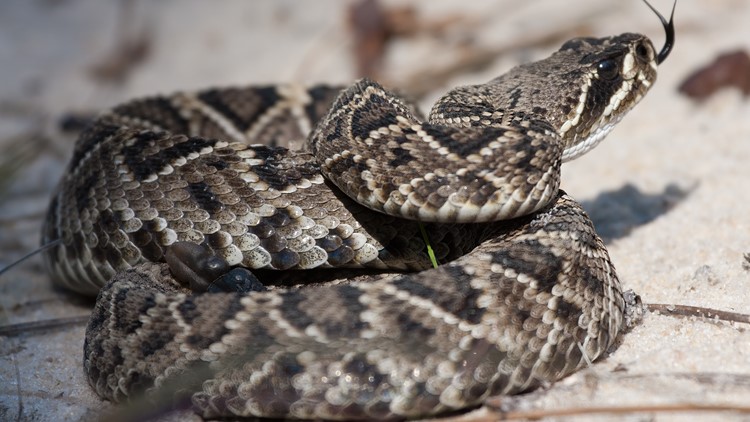TAMPA, Fla. — Florida’s wildlife is unlike any other state. From manatees to alligators, to panthers, black bears, and sharks. And that’s just a few.
However, there’s one group of animals with an interesting story, and they could be living right in your backyard, or, in your washing machine, like this woman’s.
Slithery and scaley, we’re talking about snakes. Florida has plenty of them; 44 to be exact. All of Florida’s species vary in size, color, and diet. Surprisingly, by Florida’s standards, only 6 out of the 44 are venomous.
Of those six, bites from some may not be much of a concern, while others could put you in the hospital.
Luckily though, none of these snakes, venomous or not, want to bite humans. Experts say they usually want to avoid human contact altogether, only biting when they feel threatened or harmed.
However, there is one type of snake in Florida that is very different from the rest, and not in a good way.
One of the largest snakes in the world, she can grow more than 20 feet long, can be as wide as a telephone pole, and she isn’t even from here. She’s the Burmese Python – and she’s invasive.
It’s unclear how exactly the Burmese Python invaded Florida. But in 1992, Hurricane Andrew, one of the most powerful storms on record, hit Miami. With 150 mph winds, strong enough to rip buildings apart, it destroyed a breeding facility for Burmese Pythons.
As you can guess, many of them escaped, making the Everglades and surrounding areas their new home.
Experts also suspect people keeping pythons as pets, and then later releasing them, could be a contributing factor. Sometimes they’re released because people don’t realize how big they get.
For example, a 20-foot-long Burmese Python can be as tall as, if not taller than some giraffes. Oh, and they can swim and climb trees.
With that size comes a huge appetite. It’s having devastating effects on the ecosystem, specifically in the Everglades.
According to the U.S. Geological Survey, populations of raccoons, opossums, and even bobcats have dropped severely after the introduction of the python. It adds that marsh rabbits, cottontail rabbits, and foxes effectively disappeared. All of these animals have been found in the stomachs of Burmese Pythons.
Florida wants to get rid of these pythons so bad, they’re willing to pay you to do it. Every year, the state hosts its Python Challenge. Those with the largest kill and most kills are walking away with prize money.
So, what should you do if you see a snake, or even worse, get bitten?
Most of Florida’s non-invasive snakes are completely harmless and actually do a lot of good for the environment.
Experts from the Florida Museum say if you find a native snake in your backyard or pool, don’t try to kill it. First, try to identify the snake, but then appreciate it from afar. Snakes can be very helpful by eating unwanted pests like mice, rats, and even insects.
When it comes to a bite, your chances of being bitten are pretty low. The museum says most people get bitten by trying to handle or kill a snake. You could also accidentally step on one, so watch where you’re walking.
But here’s where it gets weird. If you manage to kill a snake, they might come back for you in the afterlife, well kind of. For a short time after death, the snake may still have reflexes. Touch it wrong and you could end up with fangs in your arm.
If you are bitten by a venomous snake, stay calm. The solution is antivenin. That means a trip to the hospital.
In general, almost all snakes in Florida are valuable members of the ecosystem, so if one slithers by, the safest thing to do is let it be.



